SmartWatch Buzz – platform for behavior change?
Wednesday, September 4th, 2013Venture Beat is offering an early look at Samsung’s SmartWatch. It has a camera, is focused on wellness/fitness, integrates with the phone/tablet and has internet access.
Venture Beat is offering an early look at Samsung’s SmartWatch. It has a camera, is focused on wellness/fitness, integrates with the phone/tablet and has internet access.
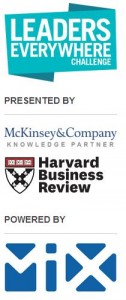 The M-prize is a management innovation contest run on the MIX and sponsored by McKinsey & Co and the Harvard Business Review. It is actually a series of prizes aimed at reworking our management models and practices for the 21st century. I submitted some cognitive design work I did with knowledge cards for the leadership everywhere M-prize. It was picked as a finalist!
The M-prize is a management innovation contest run on the MIX and sponsored by McKinsey & Co and the Harvard Business Review. It is actually a series of prizes aimed at reworking our management models and practices for the 21st century. I submitted some cognitive design work I did with knowledge cards for the leadership everywhere M-prize. It was picked as a finalist!
Here is the entry:
Using Micro-Learning to Boost Influence Skills in Emergent Leaders
Please take a moment and check it out.
Any likes, shares or comments it receives should help in the final leg of the competition which ends August 30th. You can like or share with a click but leaving a comment requires registering with the site.
Read about the other finalists on the Harvard Business Review site:
What does post-bureaucratic leadership look like?
Cognitive design has a big role to play in the management models for the 21st century. You can see aspects of it at work in many of the entries.
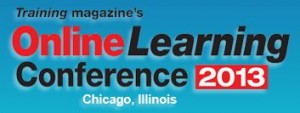 Every year organizations and individuals spend billions of dollars and countless hours to develop soft-skills. These include personal productivity and interpersonal skills such as communication, teamwork, creativity, assertiveness, influence, self control, time management and the ability to work well under pressure. Often developing soft-skills are part of a larger attempt to build even broader competencies in areas such as leadership, innovation, emotional intelligence or personal effectiveness.
Every year organizations and individuals spend billions of dollars and countless hours to develop soft-skills. These include personal productivity and interpersonal skills such as communication, teamwork, creativity, assertiveness, influence, self control, time management and the ability to work well under pressure. Often developing soft-skills are part of a larger attempt to build even broader competencies in areas such as leadership, innovation, emotional intelligence or personal effectiveness.
Building soft-skills means reading how-to books, taking seminars, being coached and doing developmental exercises or projects. While such efforts can lead to increased motivation and conceptual knowledge they often fail to produce behavior change and improved business or personal outcomes. I have dramatized the situation for a hypothetical training class below.
While most participants in the training class will give high marks to the experience (happy! score on evaluations) and pass a quiz demonstrating conceptual knowledge, few will achieve lasting behavior change that translates into improved organizational or personal outcomes (e.g. increased sales or weight loss).
The question is what are the people at the lower right of this graph doing that others are not?
They are showing a positive deviance that we need to understand. They have mastered a technique or small set of vital behaviors for converting general advice and how-to knowledge that they glean from reading and training into new outcomes. If we can understand and replicate that we have an opportunity to dramatically improve the impact of our investment in soft-skills.
I have conduct several studies aimed at answering that question. The results are clear. People getting the most out of soft-skill development efforts are able to take the macro-scale concepts and techniques taught in books and seminars and break them down down into small short experiments they can try in a real setting on a regular or daily basis. In short, they are natural born micro-learners or they have coaches that are.
I am going to discuss these studies and how we can use the results to improve the impact of soft-skills development at the Online Learning Conference in Chicago that runs September 17-19 at the McCormick Place Lakeside Center. I will be doing three speed sharing best practice sessions on Thursday morning 8:15-9:00 am. You can access the supporting handout HERE.
Hope to see you there.
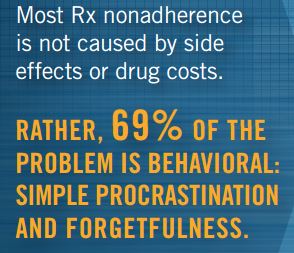 When we forget to take our medications (or decide not to) it ends up costing billions of dollars annually due to additional hospitalization, ER visits, testing and other medical care. But why do fail to take medications as prescribed? Some argue that the main reason is that drugs cost too much or that they produce side effects we will not tolerate. According to Express Scripts Lab, the main reason (69% of the time) is behavioral. We forget or procrastinate and miss a dose, are slow to refill or don’t go to the doctor to have a prescription renewed in a timely way.
When we forget to take our medications (or decide not to) it ends up costing billions of dollars annually due to additional hospitalization, ER visits, testing and other medical care. But why do fail to take medications as prescribed? Some argue that the main reason is that drugs cost too much or that they produce side effects we will not tolerate. According to Express Scripts Lab, the main reason (69% of the time) is behavioral. We forget or procrastinate and miss a dose, are slow to refill or don’t go to the doctor to have a prescription renewed in a timely way.
This is an opportunity for cognitive designers because prospective memory (remembering to remember), managing procrastination and helping people deal with complexity falls squarely within our discipline.
And there have been some interesting attempts. Two covered on the Cognitive Design Blog include GlowCaps and Smart Pill Boxes.
But we have a long way to go. Taking your meds can be complex business especially if you take more than 4 regularly and must do so on a different schedule. Insight into just how complex this can get also comes from Express Scripts Lab. They built a risk model to predict 6-12 months in advance if someone is likely to stop taking their medication. It works with 98% accuracy (which is amazing) but relies on some 400+ factors including for example, if you have children in the house and if you are male and have a female doctor.
I am interested to hear from readers that are working on the Rx non-adherence problem. What insights do you have from studying people that have developed natural solutions by and for themselves?
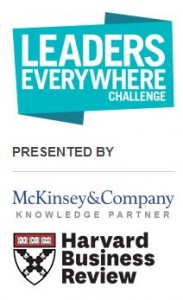 The Management Innovation Exchange (the MIX) is hosting an open innovation challenge to identify radical ideas (hacks) and success stories that illustrate how to dramatically expand the leadership capacity of an organization. Called the Leaders Everywhere Challenge they believe the key is to redistribute power so more individuals can participate in leadership and to equip and motivate emergent leaders to be effective without formal authority.
The Management Innovation Exchange (the MIX) is hosting an open innovation challenge to identify radical ideas (hacks) and success stories that illustrate how to dramatically expand the leadership capacity of an organization. Called the Leaders Everywhere Challenge they believe the key is to redistribute power so more individuals can participate in leadership and to equip and motivate emergent leaders to be effective without formal authority.
My entry is titled Using Micro-learning to Boost Influence Skills in Emergent Leaders. It demonstrates with a success story how you can use cognitive design to do interesting things in leadership development. Check it out and please leave your comments. I’ve copied an extend summary below.
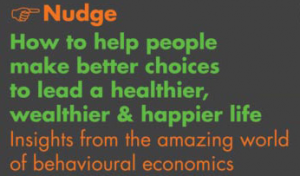 EdX is hosting a free on-line course, Behavioral Economics in Action, starting October 13, 2013. The course has been created by experts from the University of Toronto and will include guest discussions from industry leaders. Despite its academic origin the course promises to have an applied focus:
EdX is hosting a free on-line course, Behavioral Economics in Action, starting October 13, 2013. The course has been created by experts from the University of Toronto and will include guest discussions from industry leaders. Despite its academic origin the course promises to have an applied focus:
“…we go beyond the theoretical foundations of the observed phenomena, and develop a framework that allows the students to critique, design and interpret experiments; and to learn a process of designing choice environments to nudge behaviours. In short, this isn’t simply a course that exposes you to Behavioural Economics, it gets you to think and act like one!”
There is even a final project where you will develop a solution (nudge) to a specific decision-making problem.
The course runs for six weeks and takes 4-5 hours a week in effort. Well worth it to polish your nudge design skills. I am taking the class and hope to see readers of the Cognitive Design blog there.
Have you ever noticed that most improvement methodologies have you going in circles? Consider the examples below.
1. The Shewhart cycle (made popular by Deming) of plan-do-check-adjust that has been used in one form or another by nearly every organization on earth.
2. Kolb’s learning cycle, perhaps the most successful model of how adults learn from experience.
3. The method of validated learning (build-measure-learn) in the lean start-up movement that is sweeping the globe.
4. And even the scientific method itself.
This means there is a common architecture for learning, innovation and change making. It is used by the most successful coaches, leaders, entrepreneurs and activists. In my classes on leadership and innovation at Northwestern University, I present the common architecture for improvement as follows:
To get good at this you need to be skilled at each step (set the stage, try, observe and interpret), be able to manage motivation and willpower and otherwise move through the cycle fast and cheap.
That is a tall order. To help clients and students get good at going in circles, I have created a free mobile learning program called NewHabits. The program consists of decks of knowledge cards, including for example,
 Each deck includes 25 proven practices for getting better at one of the steps in the improvement process. A card in the deck “sets the stage” and gives you something specific to try to get better at observation, interpretation, willpower or whatever you select. Having 25 cards in a deck keeps you going through the improvement process multiple times. Cards are designed to fit into your daily work or home routine and takes just minutes to play. Each card is one small improvement step but the effects accumulate over time into significant new competencies and habits. In other words, the App will keep you going in circles until you get better!
Each deck includes 25 proven practices for getting better at one of the steps in the improvement process. A card in the deck “sets the stage” and gives you something specific to try to get better at observation, interpretation, willpower or whatever you select. Having 25 cards in a deck keeps you going through the improvement process multiple times. Cards are designed to fit into your daily work or home routine and takes just minutes to play. Each card is one small improvement step but the effects accumulate over time into significant new competencies and habits. In other words, the App will keep you going in circles until you get better!
The neat thing about NewHabits is you can write a deck of knowledge cards to address many behavior change and skill building challenges. For example, you can create decks to improve sales skills, customer service, teamwork or creativity. Or on the personal front knowledge cards are a good way to approach money, relationship and health challenges. I’ve taught hundreds of clients and students how to write knowledge cards and invite you to do the same.
 Innovation requires tons of personal energy and professional will. In the best case it flows from a deep attachment to a particular problem or opportunity. Something about the challenge or how you see approaching it stirs your heart, mind or soul. In short, the most effective innovators are energized by a calling.
Innovation requires tons of personal energy and professional will. In the best case it flows from a deep attachment to a particular problem or opportunity. Something about the challenge or how you see approaching it stirs your heart, mind or soul. In short, the most effective innovators are energized by a calling.
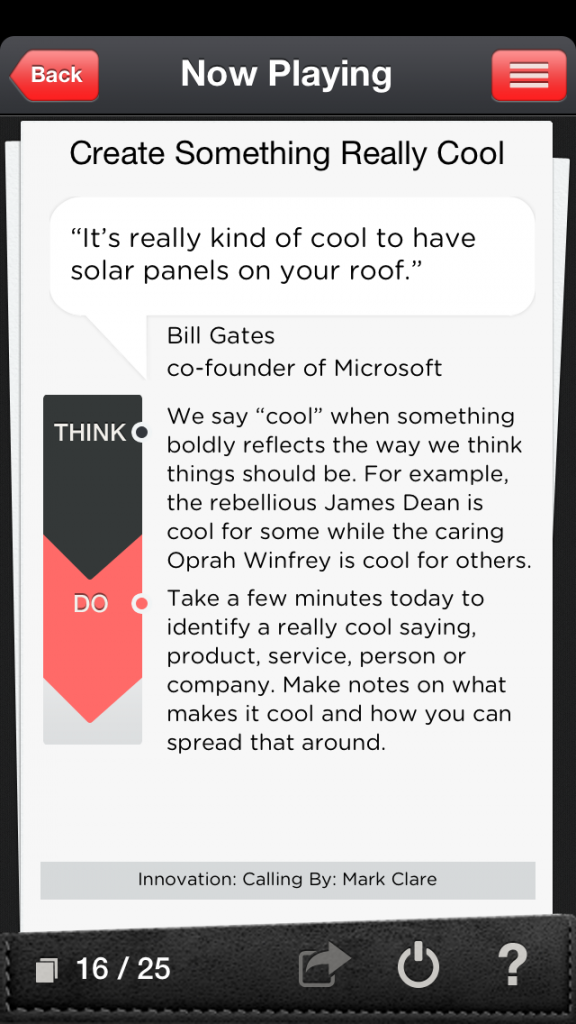 Finding or creating an innovation calling takes time. And you need certain skills and habits of mind to do it. While you most likely won’t find it by reading a book you can cultivate the skills and habits needed to eventually develop one. At least that is the spirit behind an assignment I give in my graduate class in the Foundations of Leadership at Northwestern University.
Finding or creating an innovation calling takes time. And you need certain skills and habits of mind to do it. While you most likely won’t find it by reading a book you can cultivate the skills and habits needed to eventually develop one. At least that is the spirit behind an assignment I give in my graduate class in the Foundations of Leadership at Northwestern University.
The work is guided by a set of 25 knowledge cards (example to the left) that students access from NewHabits a free iPhone and iPad App or from a private social networking site. The knowledge cards describe a proven practice for getting in touch with your innovation calling. The idea is to build these practices into your daily routine until they form habits.
While each card is only one small step toward finding your innovation calling the steps can add up. To see this effective check out a log recently created by a student documenting some 20 small steps. An excerpt is shown below.
After using the deck for a month the student concludes:
“The deck has all the elements to develop a leadership calling. To put it broadly, find something you are passionate about (stir mind, heart, soul). Find an opportunity to create value and follow through on the compassion. All of the cards are very doable (take two minutes, find one way, make a short list, etc.) and will be useful as I progress in my career.”
Give the calling cards a try and let me know how they work. What idea do you find so compelling that must take action on it?
 Self regulation includes the mental processes we use to manage emotions, drive states (hungry, thirst, need for sleep, sexual urges), cravings and thoughts in order to control behavior and reach a goal. It is fundamental for success and well-being especially when we need to make and sustain behavior change.
Self regulation includes the mental processes we use to manage emotions, drive states (hungry, thirst, need for sleep, sexual urges), cravings and thoughts in order to control behavior and reach a goal. It is fundamental for success and well-being especially when we need to make and sustain behavior change.
Often called self control for short, these mental processes play a key role in many cognitive design projects. But how can you measure it? One approach is to use the 63 item Self-Regulation Questionnaire. It has been vetted on clinical challenges and there are some suggestions that it is a good general measure.
Further work has validated a short form (13 to 16 items) of the questionnaire but I have not been able to find a free copy of it on the Internet.
Interested to hear from readers that use instruments to measure self control and regulation in an applied setting.
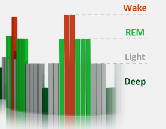 The former CEO of Zeo, a personal sleep management company, has an interesting blog post on using personal health data to change behavior. The post summarizes advice from five years in the trenches and is specific enough to be useful to cognitive designers.
The former CEO of Zeo, a personal sleep management company, has an interesting blog post on using personal health data to change behavior. The post summarizes advice from five years in the trenches and is specific enough to be useful to cognitive designers.
The bottom line is that health data and advice will change behavior if it is personalized, presents a new view on health, relates to an immediate concern (e.g. how I look) and is presented in a comparative and visual way.
Devices like Zeo’s have another important feature for changing behavior. They close the loop quick enough to hold my attention. They use sensors, devices and software to measure my behavior and then show me how the adjustments I make produce a change I want or not. If this happens in a fast and visually stimulating way (like it does in video games or speed limit signs that display my driving speed) then behavior change is more likely to take place.
How are you using personal data to drive behavior change?